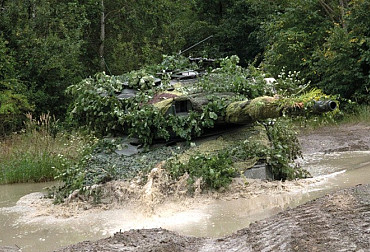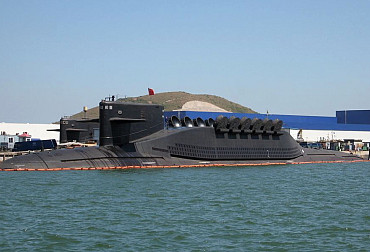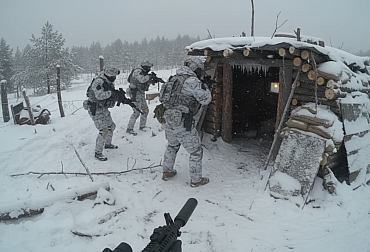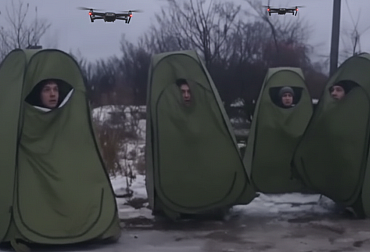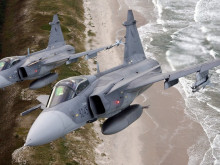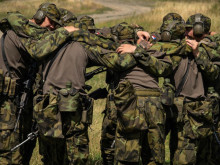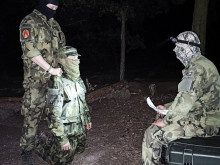General Řehka: The introduction of the H-1 helicopter is a dramatic shift in fire support capabilities
A meeting with pilots and ground personnel who returned from retraining in San Diego, USA, for the new UH-1Y Venom and AH-1Z Viper helicopters in early February and a tour of Hangar 223. Aircraft Repair Squadron - this was the programme of Wednesday's visit of the Chief of the General Staff of the Czech Air Force Major General Karel Řehka and the Commander of the Air Force Brigadier General Petr Čepelka to the 22nd Helicopter Air Base Sedlec, Vícenice near Náměšt' nad Oslavou. Tomorrow, a simulator is also expected to arrive, which will be used for further training of pilots and ground personnel. The simulator will be transported from the base in Rammstein, Germany.
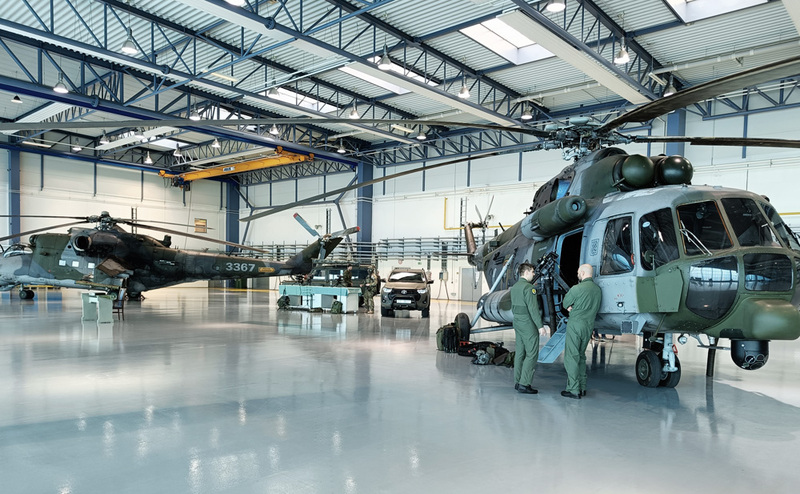 Picture: Tour of the hangar of the 223rd Aircraft Repair Squadron | Jan Zilvar / CZ DEFENCE
Picture: Tour of the hangar of the 223rd Aircraft Repair Squadron | Jan Zilvar / CZ DEFENCE
After the meeting, General Řehka said that one of the key modernisation projects is underway at the 22nd base, the transition to H-1 helicopters and their introduction into the armament of the Czech Armed Forces. This is one of the key modernisation projects for the army, when the former Soviet equipment will be gradually replaced by modern helicopters. "We are talking about helicopters of a completely different generation. All the capabilities from firepower, support, NATO compatibility, operations, communication skills, protection of that own helicopter and in all areas you look at sensors, weapons, etc.," General Řehka said. He said this type of helicopter offers a completely different capability and support to ground forces. General Čepelka added that there is a need to respond to the changing security situation in the world. "Especially weapon communication systems, self-protection systems, crew protection and the use of weapon systems in foreign operations, there is a clear qualitative advance," General Čepelka assessed.
Video: Report from the retraining of our pilots in the USA on UH-1Y Venom and AH-1Z Viper helicopters / YouTube
The delivery schedule for the new H-1 helicopters is dependent on the transport capacity of partners, he said. The 14.6 billion contract with the US company Bell provides for 12 helicopters, eight UH-1Y Venom multirole helicopters and four AH-1Z Viper attack helicopters. These are expected to be delivered this year. As for the donation of another eight helicopters, six AH-1Z Viper and two UH-1Y Venom transport helicopters by the US government, these will be delivered after the signing of the donation agreement within 24 months. This time will be devoted to upgrading to the same configuration. The $200 million financial donation from the US government to the Czech Republic will be used for this purpose. Their delivery is thus expected in the period 2025-2026.
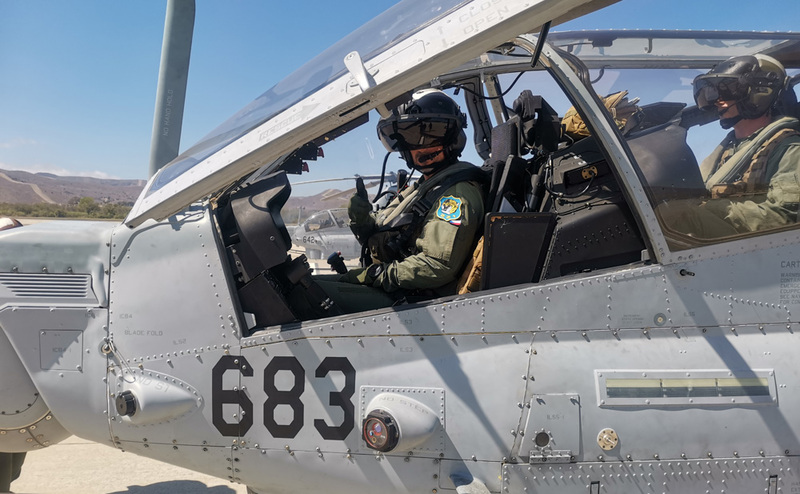 Picture: Snapshot from the retraining of our pilots in the USA | 22nd Helicopter Air Base
Picture: Snapshot from the retraining of our pilots in the USA | 22nd Helicopter Air Base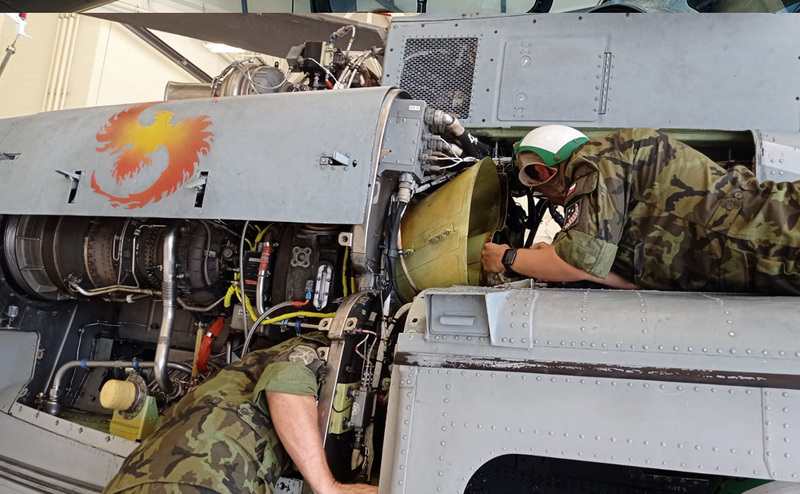 Picture: Snapshot from the retraining of our pilots in the USA | 22nd Helicopter Air Base
Picture: Snapshot from the retraining of our pilots in the USA | 22nd Helicopter Air Base
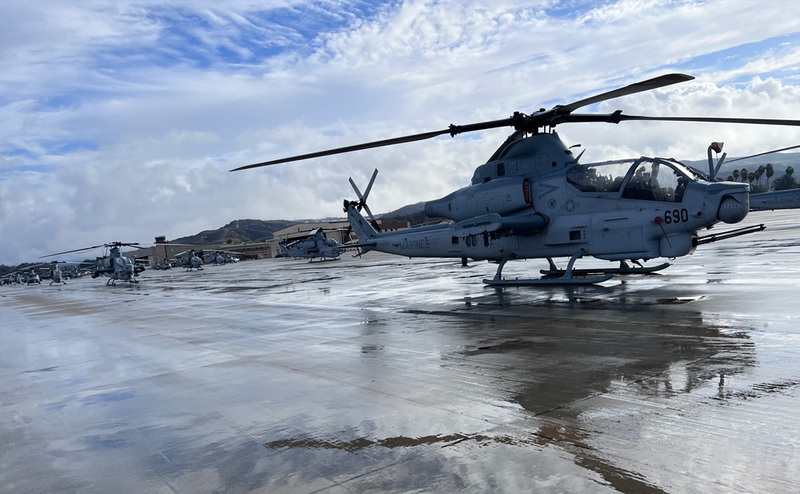 Picture: AH-1Z Viper fighters, with UH-1Y Venom multirole helicopters in the background | 22nd Helicopter Wing
Picture: AH-1Z Viper fighters, with UH-1Y Venom multirole helicopters in the background | 22nd Helicopter Wing
We wondered how fast the implementation of the new helicopters into the Czech Air Force will be. Is there any first exercise that you are planning within the Alliance forces? "There are no concrete plans yet, as the detailed plan for this training will be prepared at the end of March this year in the United States, where a final conference will be held to modify the curriculum and prepare the personnel. After that we will plan both the exercises and other activities with these machines," said the Commander of the Air Force of the Czech Republic Brig. Gen. Petr Čepelka to CZ DEFENCE. Commander of the 22nd Helicopter Base Brig. Gen. Rudolf Straka added: "The introduction of any air assets is a process of at least two years. We will not postpone the exercises, but now we will focus on the basic integration of the equipment into our forces and training. The goal then is to have some operational capability that we can then test and practice further in exercises," Straka said.
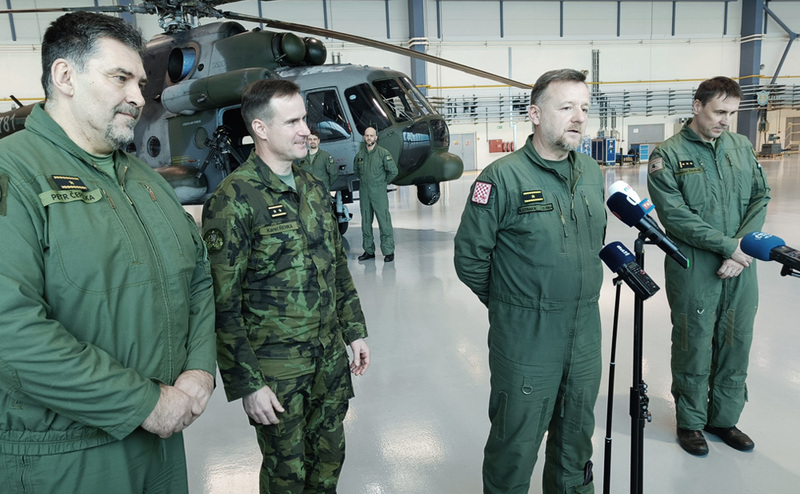 Picture: From left: brigadier general Petr Čepelka, major general Karel Řehka, brigadier general Rudolf Straka and colonel Miroslav Šajban | Jan Zilvar / CZ DEFENCE
Picture: From left: brigadier general Petr Čepelka, major general Karel Řehka, brigadier general Rudolf Straka and colonel Miroslav Šajban | Jan Zilvar / CZ DEFENCE
According to General Řehka, the soldiers are certainly not slacking off. "In February, a fairly large team here at the base has already completed and completed training in the United States, where they trained pilots and other flight personnel, as well as ground personnel. We will do everything we can to ensure that helicopter deliveries are put into service immediately and integration is as quick as possible," the Chief of General Staff concluded. According to him, one of the essential new capabilities of the helicopter is fire support. "The introduction of the H-1 helicopter is a dramatic shift in fire support capabilities for us," General Řehka said, also adding capabilities in the transport capabilities of the machines. Within NATO forces, he said, they can provide much better fire support services to ground forces through sensors, weapons systems and other communications.
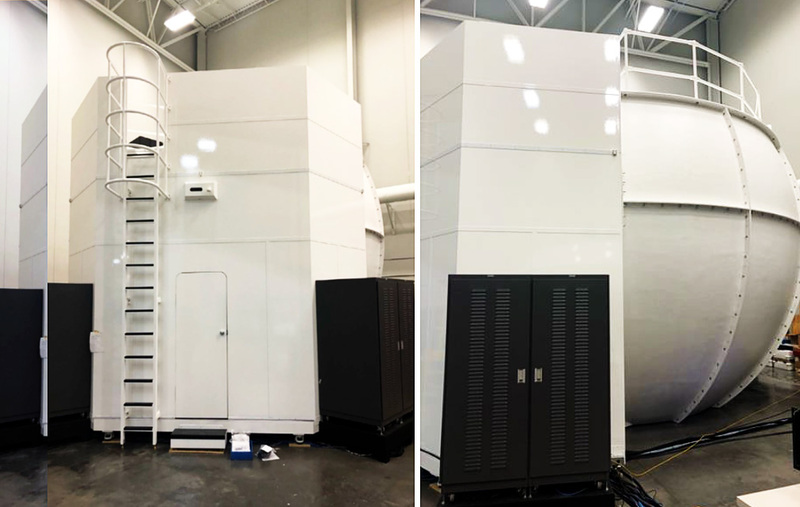 Picture: H-1 simulator | 22nd Helicopter Air Base
Picture: H-1 simulator | 22nd Helicopter Air Base
 Picture: H-1 simulator drawing | 22nd Helicopter Air Base
Picture: H-1 simulator drawing | 22nd Helicopter Air Base
The best reference is the experience of the pilots and ground personnel, who were able to become familiar with both types of helicopters during the six-month retraining. Experienced Mi-24/35 fighter pilot and now AH-1Z Viper fighter pilot Colonel Marcel Kica told CZ DEFENCE that during the retraining they spent 40 hours on the helicopter and 40 hours on the simulator. In the case of the Yankee type, it was more practical training, a total of 50 hours and the rest on the simulator.
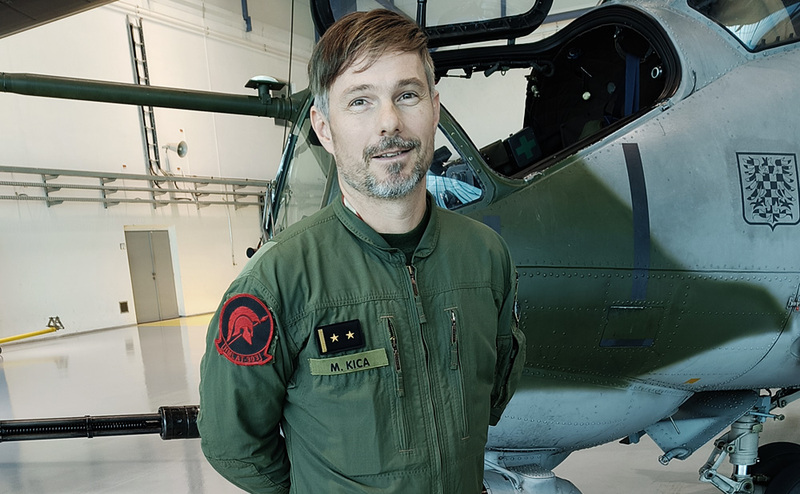 Picture: Experienced Mi-24/35 fighter pilot and now AH-1Z Viper fighter pilot Colonel Marcel Kica | Jan Zilvar / CZ DEFENCE
Picture: Experienced Mi-24/35 fighter pilot and now AH-1Z Viper fighter pilot Colonel Marcel Kica | Jan Zilvar / CZ DEFENCE
And what are the differences between the two machines? "There are a lot of differences. The rotor spins the other way. This is related to the opposite pedal control and engine control. And these are all issues that we have to override in our heads because we've been learning them for a long time. Another difference is the glass cockpit, all the avionics is displayed on two displays, we also have a transparent display on the helmet, which is mainly related to shooting, but also displays flight data and navigation data," explains Colonel Marcel Kica. Another change for the pilot is the skid landing gear. According to Colonel Kica, it is the pilot's precision that matters during take-off and landing, because this type of landing gear does not tolerate inaccuracies during landing. Both crew members also had to fill in a number of terms that are used in standard communications. Colonel Kica also highlighted the improved maneuverability of the helicopter. This, he said, is due to the design of the nose rotor head. The articulated MI-type structure is replaced here by a semi-rigid structure. And as for ballistic protection? "This is actually a special design for this type of helicopter. There is no armour used as such, but the materials can absorb some hits without disturbing the operation of the helicopter. And the pilot is protected by a special Kevlar bulletproof seat," concluded Colonel Marcel Kica of his experience with the AH-1Z Viper helicopter.
For Capt. Jiri Kratochvil, the transition to the H-1 system is a transition to the Western maintenance system. "The helicopter is designed to allow technical personnel to access, inspect and repair individual units as easily as possible. The time required to test individual systems is also much lower and requires less inspection and measurement equipment," says Captain Kratochvíl, who will use his experience from training in the US to train other technical personnel at the base.
In addition to the differences between the functionality of the wheeled landing gear on the Mi and the skid-mounted landing gear on the H-1, there are also discussions about the so-called anti-icing system. That is, the rotor blade defrosting system due to the different climatic conditions in our country and in the H-1 helicopters' areas of use.
According to expert military opinions and personal experiences of pilots (see the incident from December 2016, when the crew of an army Mi-8 helicopter over the Chrudim region had both engines ejected due to icing), the following three basic facts emerge when using the anti-icing system for H-1 helicopters:
- The Mi-8/17 anti-icing system certainly does not guarantee that the helicopter can fly with icing.
- The Mi-17 has metal rotor blades, the H-1 does not (which is an advantage). Another factor is the profile of the rotors – on the H-1 this is primarily solved by "shaking" them off by vibration.
- The previous arguments are supported by the fact that the US operates these helicopters in extreme conditions both at sea and in Alaska.
We also asked the Air Force Headquarters about the issue of anti-icing and received the following answer:
"Helicopters, as a type of aviation equipment, are not suitable for operation in icing conditions. Such conditions pose a risk to the crew, which is the most valuable thing you have as a commander. The weather forecast is so accurate today, thanks to advanced technology, that the commander knows about the possibility of icing and does not expose the crew to this risk. Heating the nose rotor blades doesn't change that fact. For this reason, even helicopter manufacturers are moving away from rotor blade heating technology. In our climatic conditions, the number of days with frost formation is between 3-4% per year. In addition, H-1 helicopters will be in covered stands and thus frost on the ground during parking is completely eliminated.
The current Mi series helicopters have heated blades, however this is only an auxiliary system. The pilot must leave the icing environment as soon as possible. Even these helicopters are prohibited by manufacturer's regulations from operating in icing conditions. In addition, it is quite a faulty system."
The meeting of the Chief of the General Staff with air and ground personnel in Namesti also included the presentation of a donation of CZK 50,221 from the 221st Helicopter Squadron to the Military Solidarity Fund for the sale of T-shirts and calendars for 2023.
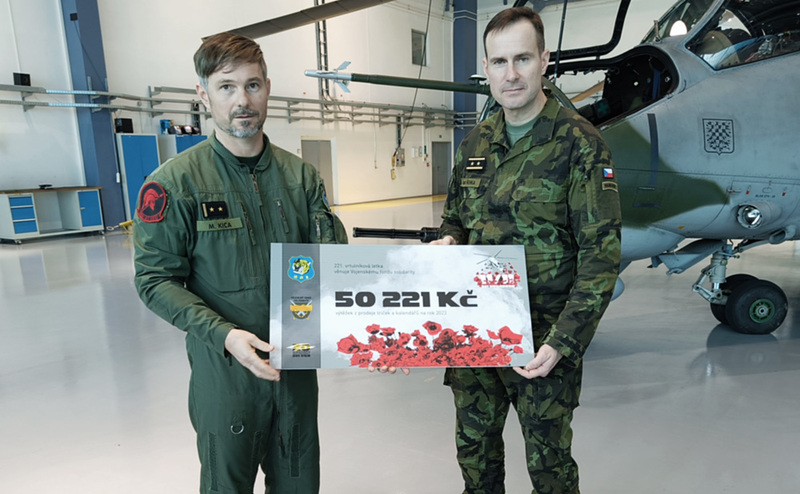 Picture: Presentation of a donation of CZK 50,221 to the Military Solidarity Fund from the 221st Helicopter Squadron | Jan Zilvar / CZ DEFENCE
Picture: Presentation of a donation of CZK 50,221 to the Military Solidarity Fund from the 221st Helicopter Squadron | Jan Zilvar / CZ DEFENCE











